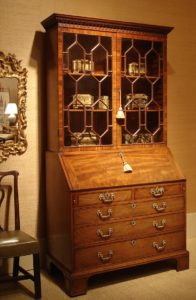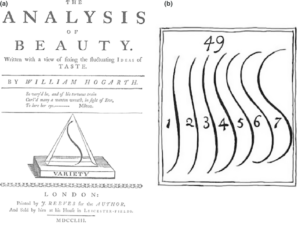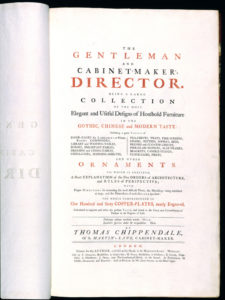 Thomas Chippendale was born in Otley, a market town in one of the Yorkshire dales, the son of a joiner, and indeed, part of a larger family of joiners and sawyers, with generations of family of similar experience behind him, in the same local burgh. In fact, those with the same surname and relatives of the great man existed in the community well into the 20th century. That the family was well known and presumably well respected as sawyers and joiners might account, taking advantage of his connection with this area of the West Riding, for the significant Yorkshire commissions Thomas Chippendale was ultimately able to glean.
Thomas Chippendale was born in Otley, a market town in one of the Yorkshire dales, the son of a joiner, and indeed, part of a larger family of joiners and sawyers, with generations of family of similar experience behind him, in the same local burgh. In fact, those with the same surname and relatives of the great man existed in the community well into the 20th century. That the family was well known and presumably well respected as sawyers and joiners might account, taking advantage of his connection with this area of the West Riding, for the significant Yorkshire commissions Thomas Chippendale was ultimately able to glean.

Mid Georgian mahogany bureau bookcase, attributable to Wright & Elwick
What’s interesting, though, is that Chippendale’s prominence occurred firstly not in his home country, but in London. What brought him there? – a tedious 200 mile journey, of course, but surprising as he was without known prospects. One assumes he had learned joinery and cabinetmaking to a journeyman’s level, but this is only a presumption, as no record of his employment with any of the established London workshops exists. Indeed, there is only a tenuous record of his working with any of the established workshops in Yorkshire, though some formidable cabinet makers were working in the area at the time. As an example, the redoubtable firm of Wright and Elwick in nearby Wakefield was well established and providing furniture for the quality at the time of Chippendale’s early maturity.
So what brought him to London and why remains a mystery for Chippendale scholars. That he was very much adept as a cabinetmaker when he reached London, without any evidence to the contrary, is accepted as a given. What is known is that his initial occupation, and that for the rest of his life, was in that hotbed of design innovation in the area nearabout St Martin’s Lane. Not only were some of the best, most fashionable established workshops-cum-ateliers along this vaunted street, but it was also home to au courant artistic production.

Hogarth’s The Analysis of Beauty, 1753
In the best example of the age of reason, it was the site of the St Martin’s Lane Academy- a loose agglomeration of artists that met in a coffee house and whose ad hoc function it became to not just teach but also to espouse contemporary ideas about proper artistic production. Indeed, the man considered the founder and for many years the prime mover in the St Martin’s Lane Academy was the doughty, thoroughly English artist William Hogarth. As well as vigorously producing his ‘modern moral subjects’ like ‘The Rake’s Progress’, Hogarth sought a cerebral link between morality, the natural order and aesthetics with the publication in 1753 of The Analysis of Beauty. With the ‘C’ scroll and the ‘S’ curve as central elements, Hogarth made English the fashion for rocaille decoration that was already the rage in France.

Title page to first edition of Chippendale’s Director…, 1754, courtesy of the Victoria & Albert Museum
In this kind of hothouse environment, Chippendale must have been exposed to Hogarth and his circle, which included the French émigré Hubert Gravelot, well-known as a drawing master and for executing designs in the rococo manner. However it happened, though, Chippendale was astonishingly well equipped to prepare the designs contained in his The Gentleman & Cabinet-Maker’s Director in 1754. I have to say, I am not too happy with the last sentence, or indeed with the last paragraph and a half, as it gives very little idea of Chippendale until he emerged, fully formed as one might say, with the publication of the Director. While Chippendale says that he worked as a cabinetmaker while preparing the book, it would be surprising to find that, with the Director such an ambitious undertaking, he had much time for anything else. This assumes Chippendale’s shop and production was small, a safe assumption as nothing else is known of any commissions he completed until he later established, with the financial assistance of James Rannie, a large premises in a good situation on St Martin’s Lane. Indeed, for all Chippendale scholars, what Christopher Gilbert termed ‘the undiscovered years’ between his leaving Yorkshire and the publication of the Director are a frustratingly gaping chasm in our knowledge of the great man. While our biographical knowledge increases with Chippendale’s marriage in 1748, it is still fairly sparse and stops a long way from explaining how he was able to accomplish such an ambitious undertaking.
